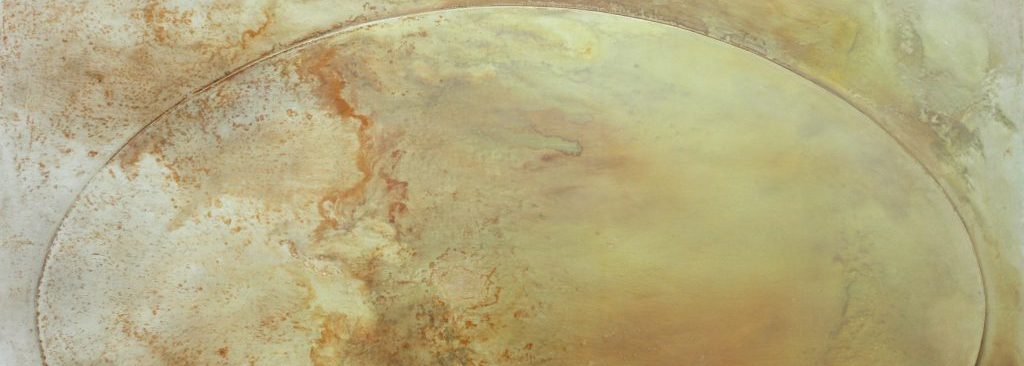The Centre is Everywhere
By Adrian J. Walker
The task I’ve been assigned is no easy one. How to do justice in just a few paragraphs to the life and work of a great friend who also happened to be a great man? Stratford Caldecott, who died three summers ago in Oxford, was one of the most remarkable people I’ve ever met, and it’s tempting to monumentalise him, but the temptation must be resisted. It’s not just that Strat himself would laugh at any attempt to portray him—the soft-spoken, self-deprecating Englishman—as some grand, heroic figure. No, it’s that even a monumental portrait would still be a caricature, a simplified, all-too static picture of an immortal soul that lives on “in the hand of God” (Wisdom 3:1), even though it is no longer visibly present among us. We mustn’t “let our dead become immature”, as Adrienne von Speyr puts it in her book Lumina.
Any claim to “sum up” Strat’s significance would be presumptuous, perhaps even sacrilegious. Only God, after all, truly knows our souls—especially when, like Strat’s, they bear whole worlds in themselves. And Strat’s mission is far from over. Even after his death, it remains what it was all along: a work in progress whose meaning continues to unfold in new ways. Looking back on Strat’s life, what we see isn’t an immobile statue (whether of the monumental or of the plaster variety) but a living Gestalt, a versatile whole whose unity is revealed through constantly renewed interchange with the surrounding world.
The same Gestalt-like quality is evident in Strat’s thought, which maintained its consistency, not by resisting the new, but by creatively assimilating it. Like Chesterton, Strat relished the sheer abundance of “all things counter, original, spare, strange”. The inexhaustible, surprising variety of the real spoke to him of a pattern, a coherent design that revealed its presence with all the force of an unexpected, yet profoundly fitting gift. I don’t know whether Strat’s daughter Rose-Marie would agree, but it seems to me that her painting lives from a similar intuition. Her work shows us in ever-new ways how apparent chaos can be an invitation to embrace a deeper order emerging—here, now, always—from the very heart of things. That vulnerable embrace is the sine qua non of any contribution we might make to ordering the world in our turn.
In the almost dizzying variety of things, then, Strat beheld a pattern that infinitely exceeded our imagination, even as this very excess called forth all our “sub-creative” daring. The ever-surprising consistency of the pattern gave the world a living quality; for Strat, there was no dead stuff anywhere, and even the super-human, crystalline mathematics of the cosmos was like the solemn play of some endlessly inventive personality. Wherever he looked, he glimpsed traces of a personal Logos in whom “everything that had been made…was life”. And the life was not only “the light of men”; it was also Love. The eternal Reason shining through the cosmos was the eternal Word of Saint John’s Gospel, the Only-begotten whose glory lay in eternal communion with the Father. The pattern of triune love matched the pattern of reality itself—with a congruence at once so unexpected and so natural as to have the unmistakable ring of truth.
When Strat spoke of the Trinity as the key to interpreting reality, then, he wasn’t just dutifully repeating what any committed Catholic ought to say. No, he had seen how the Trinitarian “dogmas introduce us into the knowledge of what is” (Maximus the Confessor). This vision came to inform every aspect of his thought—including one that I’d like to highlight here: his intensive engagement with the non-dualist traditions of Asia. The One, Strat argued, wasn’t merely the reality behind the Trinity; the One itself was the Trinity, “the monad” that, “having moved into the dyad, came to rest in the triad” (Gregory of Nazianzus). How, after all, could we account for the inexhaustible abundance of finite being, reality’s seemingly boundless appetite for the singular and the new, unless the primordial abyss of unity was a Father eternally communing with his Only-begotten in their shared Holy Spirit? Only a One anticipating the good of duality in the simple form of Trinity can be the undiminished giver of being, the “beauty past change” that unceasingly “fathers forth” creation in all its dappled glory (as Hopkins puts it).
This sounds like a recipe for triumphalism, but it was just the opposite. Strat’s idea was that if Jesus of Nazareth was the incomparable Only-begotten, the Logos who enlightened every man, then anyone who had been enlightened was in a sense Jesus’ witness or prophet—without necessarily being an accredited messenger of “special revelation” in the strict sense. Jesus’ coming, for its part, had freed human religion to be what it always should have been (at its ideal best): not an alternative path of salvation, but a foreshadowing of the Saviour; not a parallel revelation, but a preparation for the Revealer. Christ, for Strat, was the end of the homo religiosus—in both senses of “end”—who brought everything true, good, and beautiful in non-Christian religiosity to its purifying, superabundant fulfilment.
Let me be clear: For all his contributions to evangelisation both in his own country and abroad, Strat wasn’t so much a preacher, or even an apologist, as a religious philosopher who had unexpectedly encountered Christ. He never got over the surprise of that encounter, and so was able to understand those who hadn’t (yet) experienced it themselves. He wasn’t play-acting or condescending, however. Even after his conversion to the Church, he sincerely remained a seeker among seekers, the only difference being that he had found—or better: been found—by Christ. A master of intellectual empathy, Strat didn’t just see what his non-Christian interlocutor saw; he stood in his interlocutor’s shoes—and then joyfully set to work figuring out how the interlocutor’s legitimate insight, or legitimate concern, might reflect, and deepen our appreciation of, the inexhaustible riches of Christ.
Precisely because he was so firmly rooted in the centre of the Church, Strat was able to remain at its apparent periphery, a signpost for wanderers about to begin the journey home. He was neither an exile nor a wilful ex-centric, in other words, but a faithful Catholic whom Providence had led into the seeming no man’s land between Church and world. Or, to put it more precisely, he was the bearer of an ecclesial mission that placed him (together with his family) in close proximity to the Church’s “secular institutes,” which seek to live out the evangelical counsels at the core of the saeculum. Those called to this “secular consecration” (whose hour, I am convinced, is yet to come) can thus turn to him—as they turn to figures like Kierkegaard and Blondel, Chesterton, Tolkien, and Péguy—for light and consolation on their journey. This is by no means the only fruit of Strat’s mission, of course, but it is one whose—to him—unexpected appearing I feel sure would have given him special delight.
We would miss the entire point of Strat’s mission, however, if we imagined that it existed in some sort of splendid isolation. It’s not just that his wife, Léonie, and their three daughters gave his mission domestic context; it’s that they were partners in the mission itself, each in her own irreducibly distinctive way. As spouses, Strat and Léonie were also co-workers of the truth, sharers in a task that gradually expanded to involve their children and (as I like to think) their friends. Indeed, it’s precisely because Strat’s mission was never just his that it can go unfolding even after his death—not in some musty intellectual mausoleum, but in a new and living form whose ongoing development has been entrusted to the creative fidelity of Léonie and her daughters.
May God grant his servant Stratford eternal glory among the saints.
Dr Adrian Walker is a translator, writer and editor for the International Catholic Review, Communio. He teaches at the Catholic University of America.


One Comment